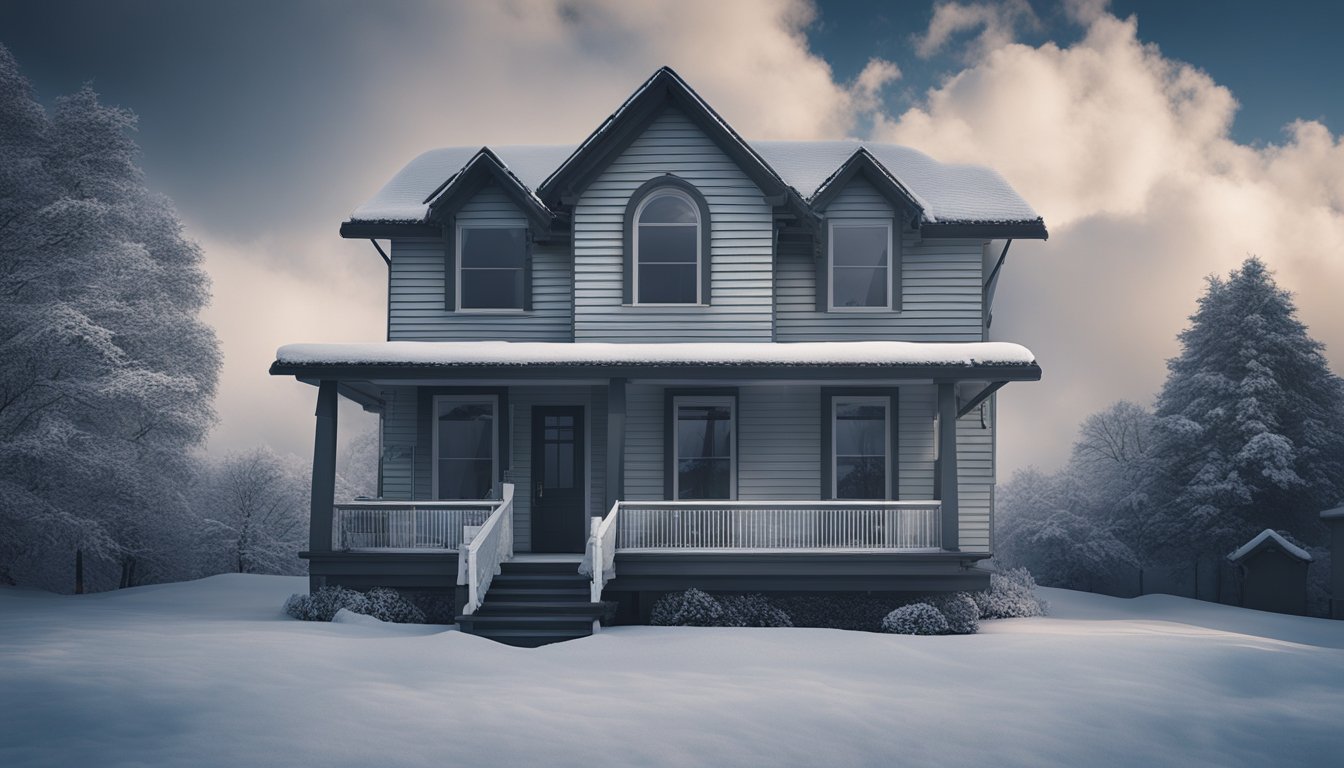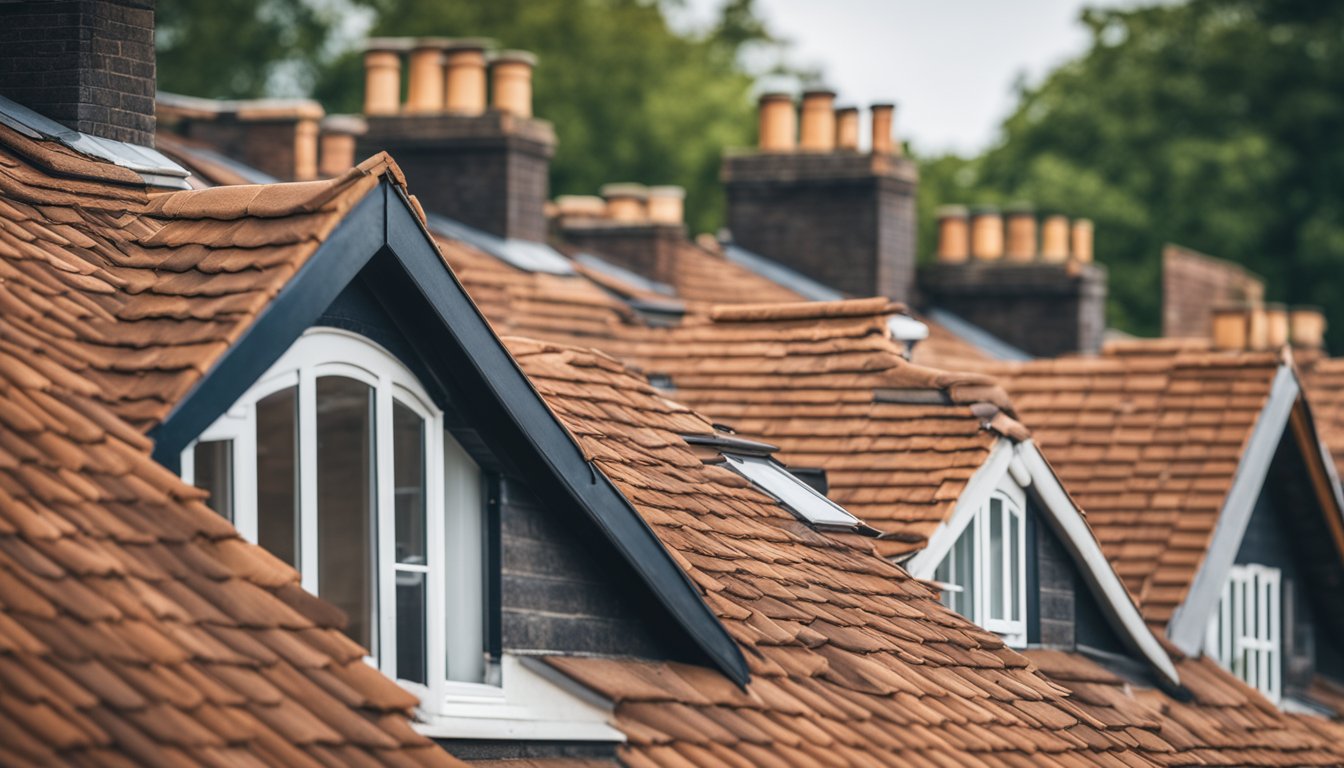Late updated: 03 Nov 2024 13:11
Written by: Oliver Bennett
Understanding UK Roof Heat Loss Causes and Solutions: Expert Insights
In the UK, heat loss through the roof is a significant concern for homeowners looking to improve energy efficiency and reduce their carbon footprint. A poorly insulated roof can result in substantial heat loss, leading to higher energy bills and a less comfortable home environment. Ensuring proper insulation not only helps retain warmth but also enhances the overall energy efficiency of a home.

Many UK homes suffer from inadequate insulation, allowing too much warmth to escape during colder months. Addressing this issue can involve various solutions, from adding high-quality insulation materials to improving ventilation systems. As we explore these strategies, we'll uncover practical steps to reduce energy wastage and improve home comfort.
The journey to minimising roof heat loss begins with understanding the causes and deploying effective insulation techniques. It's crucial to explore these methods as part of broader home improvement efforts aimed at cutting down energy consumption and promoting sustainability.
Key Takeaways
- Roof insulation is crucial for reducing heat loss in UK homes.
- Improved energy efficiency can significantly lower energy bills.
- Sustainable strategies help decrease a home's carbon footprint.
Investigating Heat Loss in UK Homes

Understanding how heat escapes from our homes is vital both for maintaining thermal comfort and for reducing energy costs. By examining common sources of heat loss, such as uninsulated roofs, windows, and draughts, we can find practical solutions that improve heat retention and help lower energy bills.
The Science of Heat Escape
Heat loss occurs when warm air inside the home escapes into the colder outside environment. This transfer of heat is influenced by the u-value of building materials, which measures their ability to conduct heat. A lower u-value means better heat retention. Conduction through walls, roofs, and floors is a major contributor.
Condensation often results from poorly insulated areas, leading to mould problems. By addressing high u-value areas, we can reduce the risk of such moisture-related issues.
Effects of Inadequate Insulation
Inadequate insulation significantly impacts energy efficiency. Homes without proper insulation allow substantial heat loss, especially through roofs and lofts. Uninsulated roofs can lead to up to 25% heat loss. This inefficiency increases fuel poverty, making it difficult for residents to afford heating.
Proper insulation reduces this loss and lowers bills. Solutions such as loft insulation offer a marked improvement in retaining heat within the house. Effective insulation not only enhances comfort but also minimises the environmental footprint of the property.
Windows and Draughts as Contributing Factors
Windows and draughts play a crucial role in household heat dynamics. Heat often escapes through gaps around windows and doors. Draught-proofing helps mitigate this issue by sealing such gaps, enhancing the home's overall thermal comfort.
Double glazing reduces heat escape and condensation on window surfaces. Its effectiveness can be evaluated by examining the u-value of the installed windows. By combining well-insulated windows with thorough draught-proofing, we can achieve a warmer and more efficient home environment, reducing the need for excessive heating. This combination acts as a significant deterrent against the financial strain of high energy bills.
Strategies for Enhanced Energy Efficiency

To enhance energy efficiency and lower carbon emissions in our homes, insulation plays a pivotal role. The following sections explore how effective insulation in roofs, walls, and floors, along with upgrading heating systems, can significantly cut energy usage and heating bills.
Roof and Loft Insulation Options
Roof and loft insulation are fundamental in reducing heat loss through the top of our homes. We can consider various insulation materials such as mineral wool, fibreglass, and spray foam. These materials fill gaps in the loft area, creating a barrier that keeps warmth inside.
For flat roofs, adding rigid board insulation beneath the roof covering can be highly effective. This prevents rapid heat escape and conserves energy over time. Loft insulation has the added benefit of reducing energy bills due to its ability to maintain a stable indoor temperature with less heating.
Walls and Floors: Insulation Solutions
Wall insulation plays an equally important role. For homes with cavity walls, cavity wall insulation involves injecting insulating materials like foam or beads into gaps between walls. This process substantially minimises heat transfer.
Solid wall insulation can be more challenging but is achievable through internal or external cladding. Each method has unique advantages, such as internal insulation being less intrusive externally while external cladding can preserve indoor space. Floor insulation can be accomplished by laying rigid foam boards beneath floorboards.
Both wall and floor insulation contribute significantly to energy savings by cutting down unwanted heat loss.
Upgrading Heating Systems and Reducing Energy Bills
Upgrading heating systems is another strategy that complements insulation efforts. Switching to modern boilers or investing in heat pumps can considerably improve efficiency. Heat pumps, for instance, provide renewable heating by extracting warmth from the air or ground.
Additionally, incorporating smart thermostats can offer precise control over heating schedules, ensuring we only use energy when necessary. This integration of technology and efficiency can lead to substantial reductions in heating bills. Radiator insulation is also crucial, with reflective panels behind radiators bouncing heat back into rooms rather than letting it escape through walls.
Frequently Asked Questions

To prevent heat loss in UK homes, understanding effective solutions is key. Various factors like insulation, ventilation, and structural components play significant roles.
What are the most effective methods for reducing heat loss in UK homes?
Incorporating high-quality roof insulation and double glazing are the primary ways to reduce heat loss. Utilising thermal curtains and draught-proofing measures also enhance efficiency. Addressing air leaks around windows and doors further curbs unnecessary heat loss.
What are the primary factors that contribute to heat loss through roofs in the UK?
Heat loss through roofs in the UK is often due to inadequate insulation and poor construction techniques. The use of outdated or insufficient materials can exacerbate the issue. Exposure to harsh weather conditions without proper protection also contributes significantly.
How does loft insulation affect the thermal efficiency of a roof in UK properties?
Loft insulation is crucial in improving a property's thermal efficiency by retaining heat within the living space. It creates a barrier that reduces the rate at which heat escapes, thus maintaining a consistent indoor temperature. This, in turn, results in lower energy consumption and costs.
Can ventilation improvements in homes minimise heat loss in the UK, and if so, how?
Proper ventilation can contribute to reducing heat loss by preventing moisture accumulation, which affects insulation efficiency. Installing controlled ventilation systems helps maintain air quality without allowing excessive heat escape. Balancing airflow with insulation supports a more energy-efficient home environment.
What is the average rate of heat loss in UK domiciles, and how can it be mitigated?
The average rate of heat loss varies based on home design and insulation levels but can be significant without intervention. Mitigation involves enhancing insulation, sealing gaps, and optimising heating systems. Regular maintenance of existing insulation ensures continued effectiveness over time.
Which heat loss calculation technique is most suitable for UK home assessments?
The Standard Assessment Procedure (SAP) is widely used in the UK for assessing heat loss. It provides a comprehensive understanding of energy efficiency by considering insulation, ventilation, and construction factors. Accurately calculating heat loss allows us to tailor effective solutions for each home.
